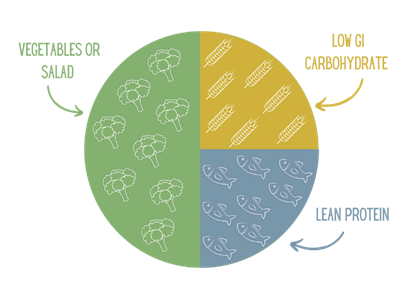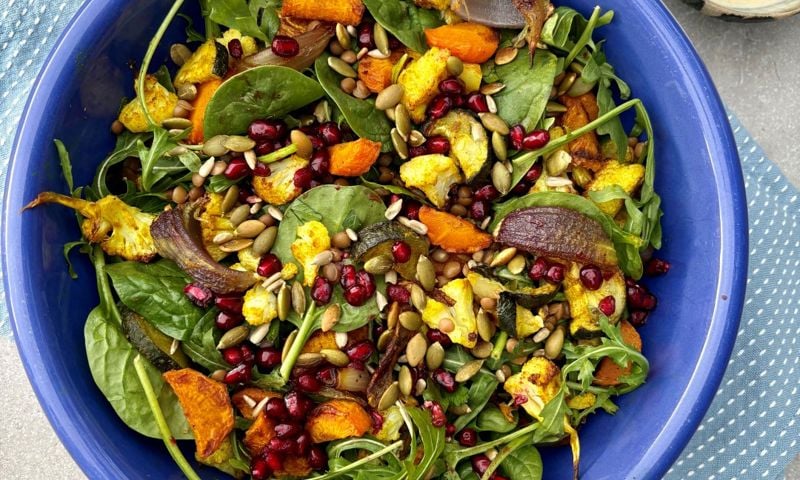Tips for healthy eating to manage diabetes and reduce your risk
GMHBA GP Dr Mark Davies and nutritionist Mel Bald have shared some healthy eating tips for people living with type 2 diabetes, as well those at risk of developing diabetes.
Some ways of eating suit some people better than others, but here are top tips from experts on how people with type 2 diabetes, or those at risk, can alter their diet for better health. These tips have been put together with those people in mind, but can be useful for anyone wanting to follow a more balanced diet.
One of the main pieces of advice for those with diabetes around nutrition is to keep carbohydrates as low as possible. The general consensus is also to follow a diet filled with vegetables and salad; low in processed food and sugar; and with a moderate amount of eggs, meat and fish.
Top nutrition tips for people with diabetes
- Replace rice with cauliflower rice and pasta with zucchini noodles – both options are dramatically better for metabolism. You can also try half and half to ease your way into this.
- When it comes to snacks, a handful of nuts is a great option, just be mindful of fruit and nut mixes as eating a lot of dried fruit can spike blood sugar levels.
- Another great snack option is slices of carrot or celery with hummus, or a nut butter, such as almond butter.
- Dips like hummus are great, just watch out for added canola or vegetable oil, and opt for those made with olive oil.
- For something sweet, try dark chocolate (70-80% cocoa), which is full of antioxidants.
- Buy organic, local and seasonal produce where possible – Dr Davies recommends grass fed beef, which is much higher in healthy Omega-3 fatty acids compared to grain-fed beef.
- Australian olive oil is picked early, pressed and bottled quickly, so don’t be afraid to cook with it – it has a high smoking point and is fine to pan fry with.
- Some recommended diets for diabetics, or those at risk of developing the disease, include a low carb, healthy fat diet, the Mediterranean diet or an Anti-inflammatory diet.
Foods diabetics should avoid
- Lower your intake of processed carbohydrates, such as cereals, bread and other wheat and grain products.
- Avoid sweetened drinks, this includes soft drinks, but also any fruit juices and sports drinks, which are generally very high in sugar.
- Eat whole fruit, rather than juice which lacks fibre. Fruits such as berries have a low glycaemic index so are ideal for those with diabetes.
- Avoid potatoes, rice and pasta, which can be easily replaced with zucchini noodles, lentil pasta and cauliflower rice.
What a healthy plate should look like
 Vegetables or salad: half your plate should be filled with these, aiming for at least five serves a day and at least three or more different coloured vegetables.
Vegetables or salad: half your plate should be filled with these, aiming for at least five serves a day and at least three or more different coloured vegetables.
Lean protein: a quarter of your plate should have a lean protein source, such as lean meat (beef, lamb or pork), skinless chicken, fish/seafood, legumes or eggs.
Low GI carbohydrate: a quarter of your plate should be filled with high fibre, lower glycemic index (GI) carbohydrates, such as basmati or brown rice, quinoa, legumes (chickpeas, kidney beans or lentils), barley, soba noodles or sweet potato. The sugars in these foods break down slower and therefore don’t cause as large a blood sugar spike.
Need more support?
We recommend chatting with your doctor in the first instance to work with them on a plan to best suit your needs. The Diabetes Australia website is also a great resource.



